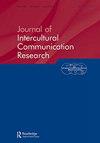Teaching as Intercultural Communication: A Sociocultural Study of Teaching English as a Second Language in an Asian Country
Q1 Social Sciences
Journal of Intercultural Communication Research
Pub Date : 2021-06-14
DOI:10.1080/17475759.2021.1932559
引用次数: 1
Abstract
ABSTRACT Teaching English as a Second Language (ESL) has always been studied through the behaviorist lens using quantitative methodology. An alternative is to view it as an intercultural communication and study it qualitatively. Through the frame of the Sociocultural Tradition of Communication Theory (SCT)where communication is theorized as the production or reproduction of the social order and where alienation, misalignments and conflicts are problematized, this study was conducted to answer two research questions: (1) What is the view of the international non-native English professional teachers on ESL teaching? (2) How does this view define their intercultural communicative practices as ESL teachers? In this investigation the view of the participants on ESL teaching constitutes as the meaning that defines their intercultural communicative practices. Such practices explain how the social order where professional standards are alienated and how the traditional teaching proliferates in the ESL classroom is reproduced. A thematic analysis of the interviews of three overseas professional teachers was employed. The analysis surfaced participants’ view of ESL teaching as embracing of the local culture for employment and education. This view defines three communicative practices: local colleagues are befriended; local language is learned; and local culture is integrated in teaching.跨文化交际教学:英语作为第二语言教学的社会文化研究 在亚洲国家
摘要英语作为第二语言的教学一直是从行为主义的角度,采用定量的方法进行研究的。另一种选择是将其视为跨文化交际,并对其进行定性研究。本研究以交际理论的社会文化传统(SCT)为框架,将交际理论化为社会秩序的生产或再生产,并将异化、错位和冲突问题化,以回答两个研究问题:(1)国际非母语英语专业教师对ESL教学有何看法?(2) 这种观点如何定义他们作为ESL教师的跨文化交际实践?在这项调查中,参与者对ESL教学的看法构成了他们跨文化交际实践的定义。这些实践解释了专业标准被异化的社会秩序是如何再现的,以及传统教学是如何在ESL课堂上激增的。对三位海外专业教师的访谈进行了专题分析。该分析表明,参与者认为ESL教学是对当地就业和教育文化的包容。这种观点定义了三种交际实践:当地同事成为朋友;学习当地语言;在教学中融入当地文化。
本文章由计算机程序翻译,如有差异,请以英文原文为准。
求助全文
约1分钟内获得全文
求助全文
来源期刊

Journal of Intercultural Communication Research
Social Sciences-Cultural Studies
CiteScore
2.00
自引率
0.00%
发文量
20
 求助内容:
求助内容: 应助结果提醒方式:
应助结果提醒方式:


